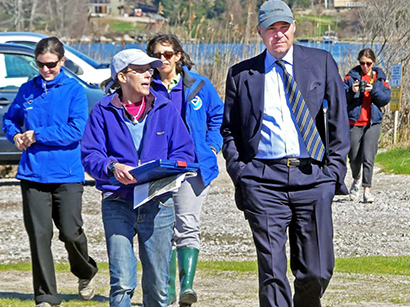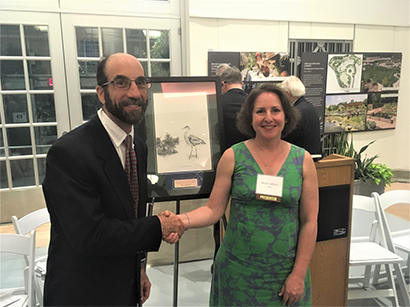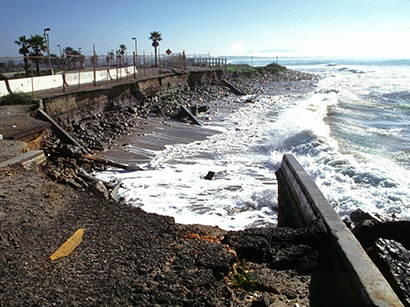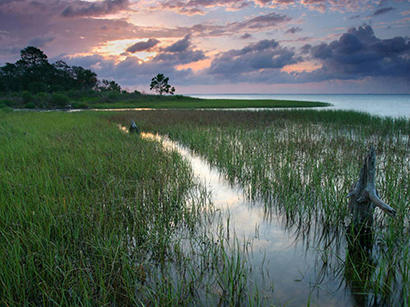|
Take a virtual walk along Town Brook to see fish passage projects that have reopened the stream, giving migrating herring and eel new access to restored habitats. Town Brook in Plymouth, Massachusetts, once full of barriers blocking migrating fish from passing, has recently been reopened and restored. Now fish can make it to and from habitats important for their survival and sustainability, and they are also better able to support ocean species that rely on them for food. View New Story Map >
NOAA is announcing $7.43 million in funding for two existing partners—Friends of the Detroit River and the Michigan Department of Environment, Great Lakes, and Energy—to continue habitat restoration through the Great Lakes Restoration Initiative. They will use this funding to bring three projects into the next phases of implementation, resulting in multiple ecological, community, and economic benefits for Great Lakes ecosystems and communities. Learn More >
 |
NOAA and partners released scientific and outreach tools to better understand and help guide the management of anchialine pools within the West Hawaiʻi Habitat Focus Area. Anchialine pools are brackish, tidally influenced bodies of water with a subterranean connection to the ocean. These sensitive ecosystems support fisheries, cultural practices, and tourism, and are threatened by climate change, invasive species, and other factors. An informational brochure demonstrates how anchialine pools are vulnerable to climate change, and an interactive mapping tool displays the potential risk of sea level rise to anchialine pool ecosystems. Learn More >
 |
NOAA, partners, and Rhode Island Senators Reed and Whitehouse met last month to share in the success and tour the completed first phase of a salt marsh restoration project at Quonochontaug Pond in southern Rhode Island. By elevating the sinking marsh with a new layer of sediment, partners expect to restore habitat for fish and wildlife and increase local community resilience to sea level rise and coastal storms. Learn More >
 |
Nicole LeBoeuf, Acting Assistant Administrator for NOAA’s National Ocean Service, recently honored Dr. Joel Gerwein of the California State Coastal Conservancy with a National Wetlands Award in the category of Conservation and Restoration. Joel received the award for his efforts over the past eleven years to protect and restore coastal ecosystems, specifically wetlands on the Northern California Coast, focusing on Humboldt Bay. The awards are administered by the Environmental Law Institute with support from federal agencies, including NOAA Fisheries which has been a partner on the awards for over twenty years. Learn More >
 |
Partners at the National Fish and Wildlife Foundation assessed coastal resilience in five regions and eight watersheds in the contiguous United States, making data available for use in planning and projects. NFWF, supported by funding from NOAA, released multiple reports and an online mapping tool focused on assessing resilience along the coastline of the contiguous United States. The reports and tool summarize available data to help understand areas where habitat conservation could provide protection to human communities and infrastructure vulnerable to coastal storms, sea-level rise, and flooding events. Learn More >
 |
The Deepwater Horizon Open Ocean Trustee Implementation Group is hosting public engagement opportunities the afternoon of June 4, 2019 in Pensacola, Florida. The Trustee Council will also hold an outreach and education workshop on June 5, and their annual public meeting on June 6 at the same location. Additional details about these public events, and how to sign up for updates about all of our Gulf Spill Restoration efforts, are available online. Learn More >
Southern steelhead and abalone (black and wite) are iconic to southern California history and culture, but now are endangered and nearly forgotten. The three species also have significant historical importance to native Chumash. NOAA helps recovery of these species by working with partners to restore their important habitats. Watch Videos >
Science helps us understand environmental damage from pollution. Thousands of oil spills happen every year, and most pollution cases don’t make the news. It can take years or decades for waterways to recover from pollution. NOAA works with other federal agencies on the response and restoration. We use science to figure out exactly what damage has been done so that ecosystems can be restored. Learn More >
The U.S. Coral Reef Task Force—created by Executive Order in 1998 to coordinate coral reef conservation activities among government agencies at the national and local level—recently held its 41st meeting in Washington, DC. The meeting, co-chaired by NOAA and Department of the Interior leadership, provided a valuable opportunity to discuss current issues in coral reef conservation. A diverse group of panelists representing academia, the non-governmental sector, and the federal government shared updates on coral reef restoration studies and activities. Learn More >
|